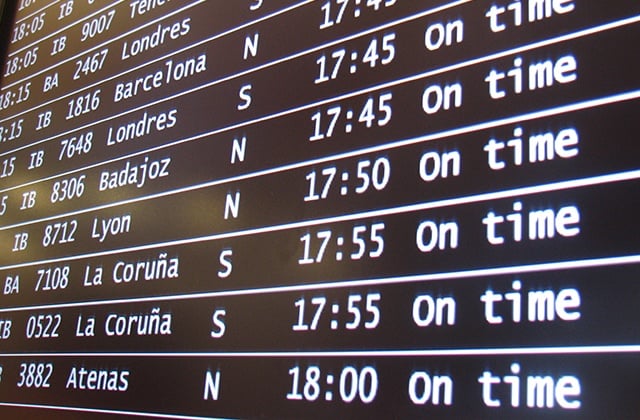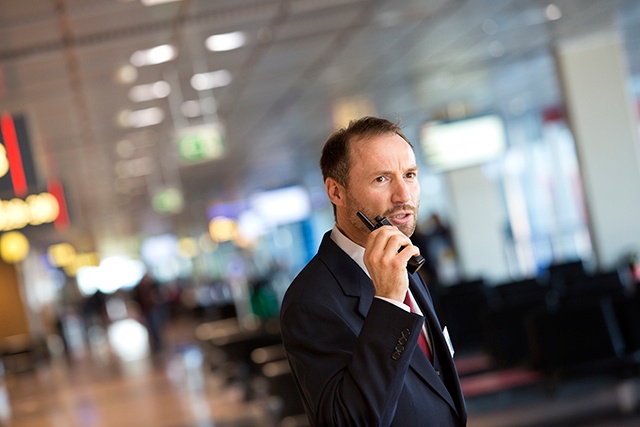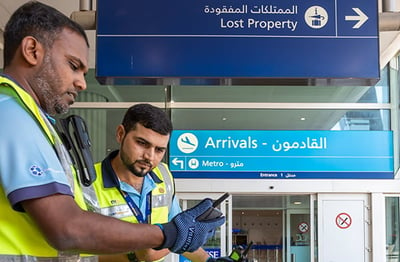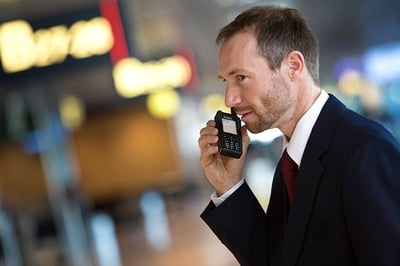It’s very likely that you have travelled at least through one airport in 2015. And even if you didn’t, you are certain to know that modern airports are very much like small cities or large villages. Hundreds or thousands of people work there to ensure smooth passage for the travellers.
There are almost 1,000 airports in the world, and more are being built. The number of air passengers is also on the rise.
Many times, things are fast and smooth and queues are short.

Sometimes, however, one gets unlucky and has to spend extra minutes or hours at the airport.
Several organizations publish airport rankings, each from their own point of view. These criteria often contribute to the final ranking:
- Travellers' overall experience at the airport
- Aircraft turnaround times / Timeliness of flights
- Average waiting times in security lines
Why do some airports perform better than others?
The airport operator has the key role when it comes to airport performance. The best operators plan and execute well.
An effective, successful airport operator knows the value of good communications. Communication is vital when the right people and resources have to be at the right place at the right time. It’s obvious that the teams have to talk together to be effective.

Airports therefore need group communication over radio if they want to minimize aircraft turnaround time.
The world's top 10 airports 2015
The following airports have the best travellers' experience according to SKYTRAX World Airport Awards:
- Singapore Changi *
- Incheon Intl Airport *
- Munich Airport *
- Hong Kong Intl *
- Tokyo Intl Haneda
- Zurich Airport *
- Central Japan Intl
- London Heathrow
- Amsterdam Schiphol *
- Beijing Capital Intl Airport *
The airports marked with an asterisk * have adopted TETRA/Tetrapol radio communication. The majority of the top performing airports, that is.
Another indication of airport performance is how well it manages the flow of passengers (PAX).
I took a look at the list of the airports with the most PAX on international flights.
- Dubai International Airport, United Arab Emirates - 70 million PAX *
- London Heathrow Airport, United Kingdom - 68 million PAX *
- Hong Kong International Airport - 63 million PAX *
- Paris-Charles de Gaulle Airport, France - 59 million PAX *
- Amsterdam Airport Schiphol, Netherlands - 55 million PAX *
- Singapore Changi Airport - 54 million PAX *
- Frankfurt Airport, Germany - 53 million PAX *
- Incheon International Airport, South Korea - 45 million PAX *
- Atatürk International Airport, Turkey - 38 million PAX *
- Suvarnabhumi Airport, Thailand - 37 million PAX
- Taoyuan International Airport, Taiwan - 35 million PAX *
- London Gatwick Airport, United Kingdom - 34 million PAX *
- Kuala Lumpur International Airport, Malaysia - 34 million PAX *
- Munich Airport, Germany - 30 million PAX *
- Narita International Airport, Japan - 30 million PAX
- Madrid-Barajas Airport, Spain - 30 million PAX *
- John F. Kennedy International Airport, United States - 28 million PAX *
- Barcelona–El Prat Airport, Spain - 27 million PAX *
- Leonardo da Vinci–Fiumicino Airport, Italy - 27 million PAX *
- Hamad International Airport, Qatar - 26 million PAX *
The airports marked with an asterisk * have a growing number of passengers. Most of them also have digital TETRA radios in use.
The secret to airport success
Good radio communications over TETRA help the airport operator manage a larger number of passengers through the airport. I also believe that this generates new business because good communications help ensure smooth operations at busy airports.
Did you know?
In 2014, more than 1,000,000,000 passengers travelled through airports that have adopted digital TETRA/Tetrapol radios.
Learn more -
Take a look at this success story - "Going digital clears the airwaves at Beijing Capital International Airport"
Sources:
http://www.worldairportawards.com
https://en.wikipedia.org/wiki/List_of_the_world%27s_busiest_airports_by_international_passenger_traffic





